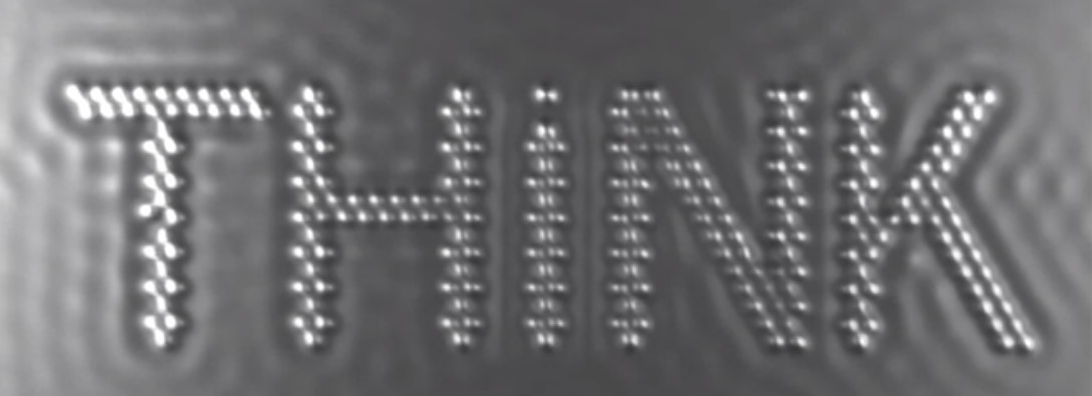Researchers create world’s smallest movie
Four IBM scientists have managed to create the world’s smallest movie, which has been certified by the Guinness Book of World Records.
Watch the world’s smallest movie below:
Researchers made the film by manipulating a few dozen carbon atoms across a copper surface, using the tip of a scanning tunnelling microscope (STM), which is an instrument for imaging surfaces at the atomic level. It would take around 1,000 frames of the film laid side-by-side to span the width of just one human hair.
The stop-motion animation is called “A Boy and His Atom”, and shows a boy playing with a single atom ‘ball’ on a trampoline. This technology requires the STM, which won IBM scientists the 1986 Nobel Prize in Physics. The microscope passes an electrically charged, sharp needle across the surface of a sample, which then allows the charge to ‘jump the gap’ in a quantum phenomenon called “tunnelling”.
The images in the movie display maps of this tunnelling current effect. There are 242 frames in the 90-second animation, which took the four scientists two weeks of 18-hour days to complete.
Andreas Heinrich, head investigator at IBM Research in California, explained the technology: “The tip of the needle is both our eyes and our hands: it senses the atoms to make images of where the atoms are, and then it is moved closer to the atoms to tug them along the surface to new positions.
“The atoms hold still at their new positions because they form chemical bonds to the copper atoms in the surface underneath, and that lets us take an image of the whole arrangement of atoms in each frame of the film. Between frames we carefully move around the atoms to their new positions, and take another image.”
The movie is really a demonstration of IBM’s ideas to create next-generation data storage solutions using single atoms. It highlights how scientists have a growing ability to manipulate data on an atomic level.
“This isn’t really about a particular scientific breakthrough. The movie is really a conversation-starter to get kids and other people talking about – and excited about – math, science and technology,” Dr Heinrich added.
In 2012, IBM discovered a way to store a digital “bit” (the smallest unit of information), using only 12 atoms, but wish to make this even smaller. Researchers at IBM have been behind many technologies which can look into atomic and molecular systems. Recently they have invented an atomic force microscope, which has taken photos of single molecules, and the atomic bonds within molecules.

Comments (1)